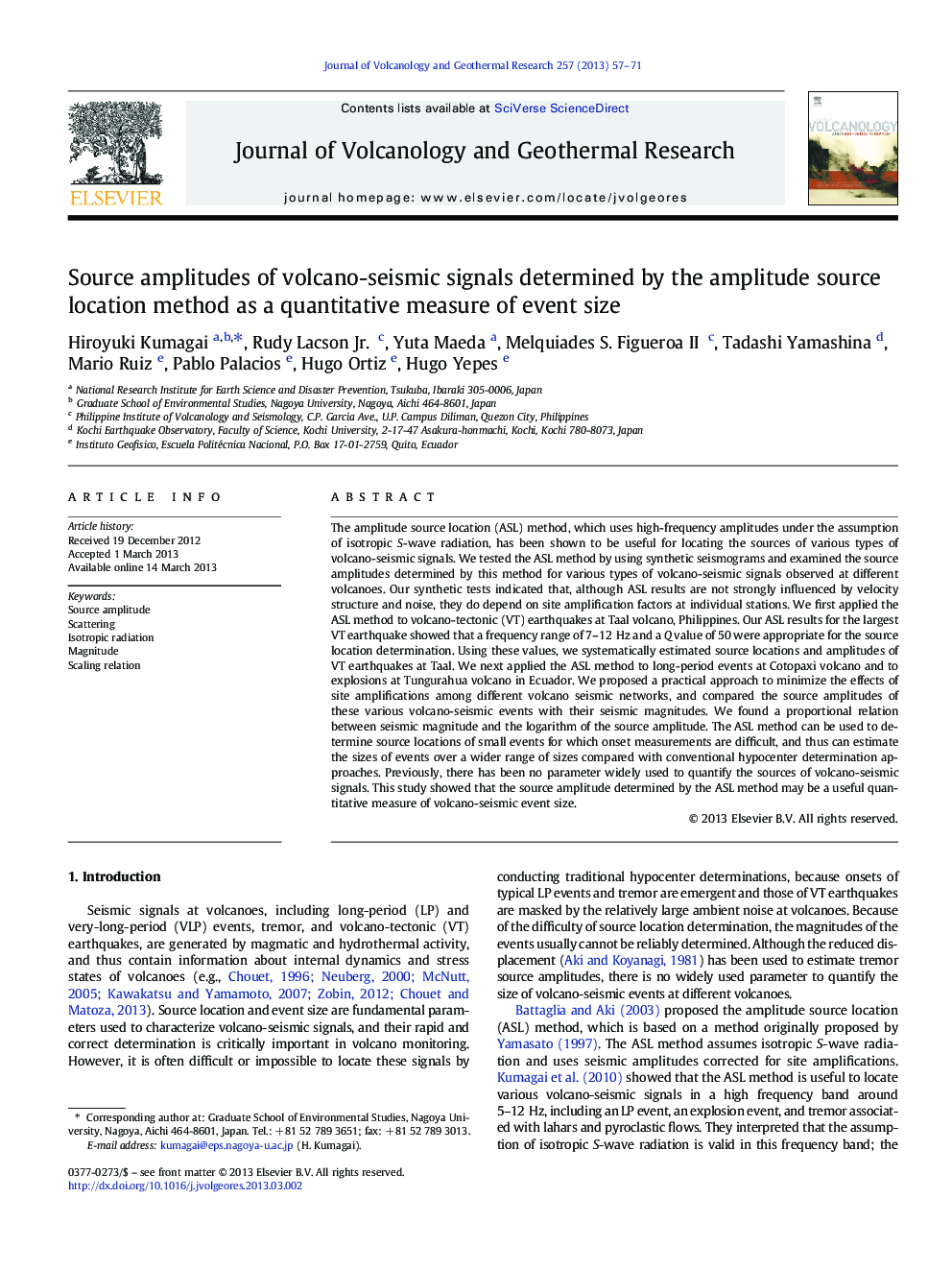| Article ID | Journal | Published Year | Pages | File Type |
|---|---|---|---|---|
| 4714826 | Journal of Volcanology and Geothermal Research | 2013 | 15 Pages |
•The amplitude source location method was applied to various events at volcanoes.•A scaling relation exists between the source amplitude and seismic magnitude.•The source amplitude may be used as a measure of volcano-seismic event size.
The amplitude source location (ASL) method, which uses high-frequency amplitudes under the assumption of isotropic S-wave radiation, has been shown to be useful for locating the sources of various types of volcano-seismic signals. We tested the ASL method by using synthetic seismograms and examined the source amplitudes determined by this method for various types of volcano-seismic signals observed at different volcanoes. Our synthetic tests indicated that, although ASL results are not strongly influenced by velocity structure and noise, they do depend on site amplification factors at individual stations. We first applied the ASL method to volcano-tectonic (VT) earthquakes at Taal volcano, Philippines. Our ASL results for the largest VT earthquake showed that a frequency range of 7–12 Hz and a Q value of 50 were appropriate for the source location determination. Using these values, we systematically estimated source locations and amplitudes of VT earthquakes at Taal. We next applied the ASL method to long-period events at Cotopaxi volcano and to explosions at Tungurahua volcano in Ecuador. We proposed a practical approach to minimize the effects of site amplifications among different volcano seismic networks, and compared the source amplitudes of these various volcano-seismic events with their seismic magnitudes. We found a proportional relation between seismic magnitude and the logarithm of the source amplitude. The ASL method can be used to determine source locations of small events for which onset measurements are difficult, and thus can estimate the sizes of events over a wider range of sizes compared with conventional hypocenter determination approaches. Previously, there has been no parameter widely used to quantify the sources of volcano-seismic signals. This study showed that the source amplitude determined by the ASL method may be a useful quantitative measure of volcano-seismic event size.
